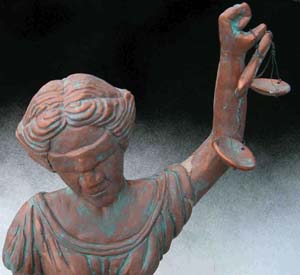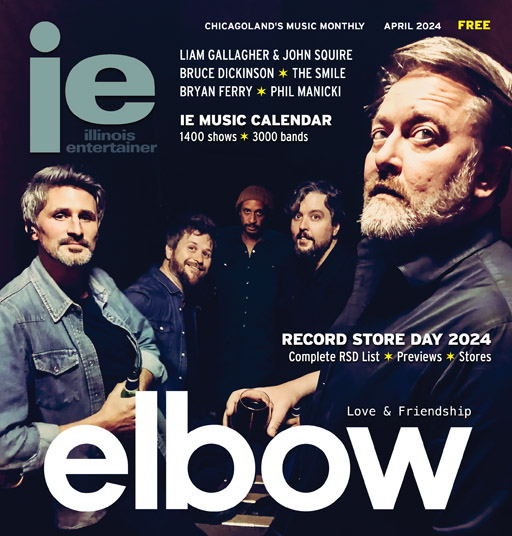Bong Hits 4 Freedom
At first glance it’s a story of a high-school kid versus his principal in a quirky schoolyard First Amendment stand. A student fought for his right to hold up a sign that read “Bong Hits 4 Jesus” during what may or may not have been a school fieldtrip.

Yet, the case deserves a deeper look not just because it advanced to a Supreme Court ruling this summer, but because it may eventually – and inadvertently – be remembered as the first governmental blow against students’ freedom of expression in the emerging media: the Internet.
First, the backstory: In 2002, student Joseph Frederick was suspended by principal Deborah Morse for holding up the sign in Juneau, Alaska as the Olympic torch passed through town. The nonsensical drug reference was an apparent stunt to attract media attention to himself. Though the school let students out of classrooms to view the procession, Frederick argued the school could not suspend him since he was exercising his freedom of expression off-campus, certainly protected under the First Amendment. School officials argued they could punish him for promoting drug use during what they argued was a school-sponsored fieldtrip. Frederick sued for his rights.
Fast forward five years. With a 5-4 ruling (Morse v. Frederick) in late June 2007, the United States Supreme Court ruled against Frederick, effectively widening public schools’ jurisdiction to discipline and punish students for subjective conduct violations beyond school property.
Chief Justice John Roberts wrote in the majority opinion that the principal was within her rights to suspend Frederick “Because schools may take steps to safeguard those entrusted to their care from speech that can reasonably be regarded as encouraging illegal drug use, the school officials in this case did not violate the First Amendment by confiscating the pro-drug banner and suspending Frederick . . . The Court agrees with [Principal] Morse that those who viewed the banner would interpret it as advocating or promoting illegal drug use, in violation of school policy.”
Case closed, or so it seems. The precedent has been set, and it certainly affects student freedom of expression on the Internet, the ultimate “off-campus” location. Since Frederick held up his sign in 2002, social networking sites like MySpace and Facebook have become a primary form of self-expression for some high school (especially in affluent suburbs) and college students. Pictures of weekend parties are posted, blogs are maintained to keep in touch with far-off friends – most of whom have never met in person – and personal philosophies are spelled out, right alongside lists of current favorite songs. And instant fame is a temptation on sites like YouTube. As it turns out, the Internet affords users the most convenient and mass-disseminated form of self-expression.
At the same time, public schools have had to decide whether to allow their students access to these sites on school computers or enable filters to block access to these virtual personal billboards. A cardboard sign reading “Bong Hits 4 Jesus” is one thing. How about an entire Web site devoted to that message – written, edited, and designed off-campus on a home computer – popping up on a school library’s computer? Producing such a message, or any other message deemed “inappropriate” by school officials, may now be punishable under an interpretation of this ruling.
Now, no one would rationally advocate student drug use, but it isn’t about the message. It’s about the freedom guaranteed by the Constitution. Only four justices apparently saw it this way, writing in the dissenting opinion: “[T]he school’s interest in protecting its students from exposure to speech, reasonably regarded as promoting illegal drug use . . . cannot justify disciplining Frederick for his attempt to make an ambiguous statement to a television audience simply because it contained an oblique reference to drugs. The First Amendment demands more, indeed, much more . . . The First Amendment protects student speech if the message itself neither violates a permissible rule nor expressly advocates conduct that is illegal and harmful to students. This nonsense banner does neither, and the Court does serious violence to the First Amendment in upholding – indeed, lauding – a school’s decision to punish Frederick for expressing a view with which it disagreed.”
Justice Breyer expressed his displeasure in the case and predicted messy scenarios the ruling may cause: “One concern is that, while the holding is theoretically limited to speech promoting the use of illegal drugs, it could in fact authorize further viewpoint-based restrictions. Illegal drugs, after all, are not the only illegal substances. What about encouraging the underage consumption of alcohol? Moreover, it is unclear how far the Court’s rule regarding drug advocacy extends. What about a conversation during the lunch period where one student suggests that glaucoma sufferers should smoke marijuana to relieve the pain? What about deprecating commentary about an anti-drug film shown in school? And what about drug messages mixed with other, more expressly political, content? . . . Speech advocating change in drug laws might also be perceived of as promoting the disregard of existing drug laws.”
All of which can be expressed more easily on the Internet. Although the ruling applies to public-school students, its effects will echo beyond graduation. It creates, teaches, and even reinforces a “chilling effect” on the general population while it chips away at First Amendment freedoms in general.
– Jason Scales









